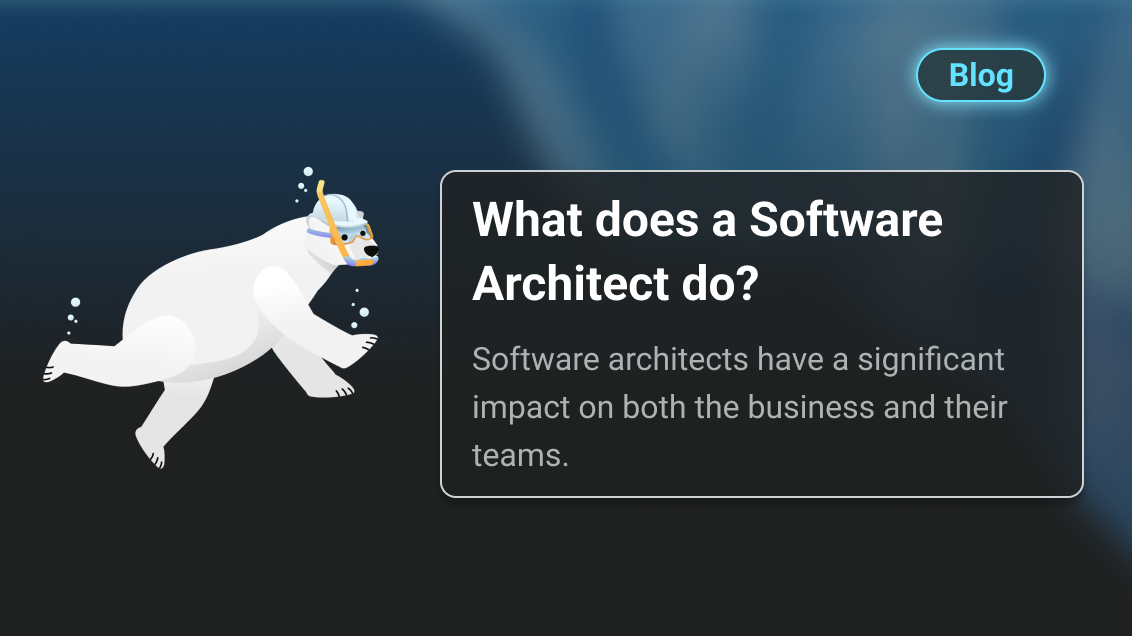What does a Software Architect do?
Software architects have a significant impact on both the business and their teams. They maintain a bird’s-eye view of the software architecture, support the tech stack for engineering teams, and proactively plan for adopting new technologies and managing projects involving architectural changes.
They have a lot on their plate. Let’s expand more below 👀
🧢 Software Architect Role
The role of a software architect is to design an architecture that supports deploying new components where they all collectively deliver a unique value to customers. They empower software engineers to develop and ship their business logic to run on top of the software architecture, while making sure customers can easily access the software at any time.
TL;DR: Engineers focus on technical depth, while architects focus on technical breadth.
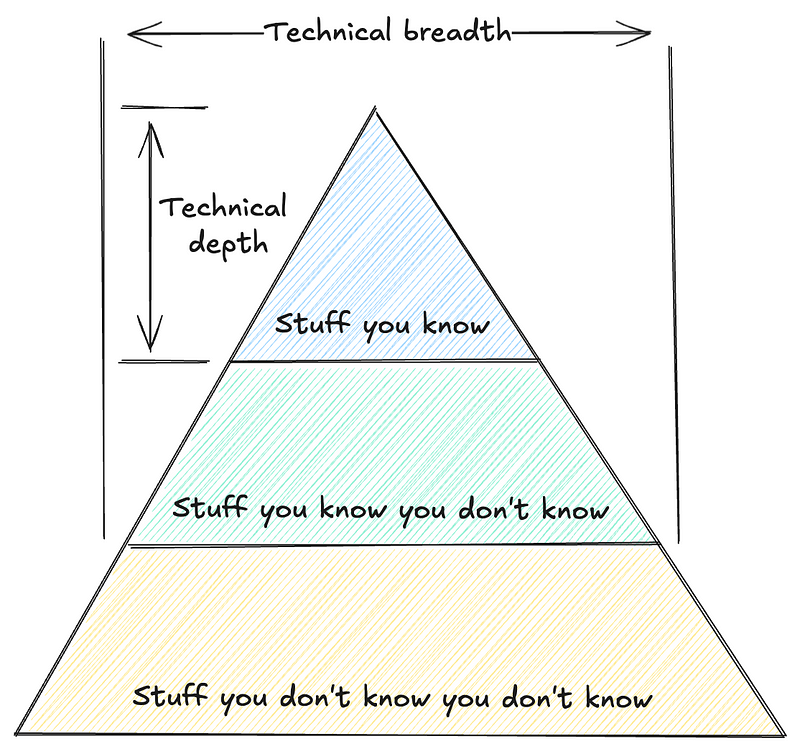 Software architecture breadth over depth
Software architecture breadth over depth
Software engineers tend to focus more on technical depth, such as:
- Writing clean, maintainable code with unit/integration tests.
- Thinking about concurrency models and how to use them.
- Optimizing performance using specific algorithms and data structures.
- Deepening their expertise in a particular framework or tech stack.
- Designing database schemas while considering read/write patterns.
Software architects focus more on technical breadth, such as:
- Working with different technology stacks and understanding their integration.
- Aligning technology decisions with business goals and long-term vision.
- Planning cloud infrastructure and deployment strategies across multiple projects.
- Designing software architectures for projects with different requirements.
- Evaluating trade-offs when choosing architectural styles (e.g., event-driven vs. microservices).
Having this broader perspective enables software architects to connect the dots across diverse technologies and business needs, ensuring the overall system is cohesive, reliable, and aligned with the company’s strategic direction. Their role focuses less on writing code or mastering a specific framework and more on providing a solid technical foundation that empowers engineering teams to collaborate, develop, and deliver business value.
🔮 Expectations of a Software Architect
According to the Fundamentals of Software Architecture book, the expectations of a software architect is to:
- Make architectural decisions
They are responsible for choosing the right technologies and patterns to meet both current and future needs.
- Continually analyze the architecture
They regularly review and evaluate the architecture to identify risks, bottlenecks, and areas for improvement.
- Keep current with the latest tech trends
They stay up to date with new tools, frameworks, and best practices to keep the architecture stable and secure.
- Ensure compliance with their decisions
They make sure implementations align with the intended architecture and standards.
- Have diverse exposure and experience
They possess broad experience across different domains, technologies, and project types to make better-informed decisions.
- Have business domain knowledge
They understand the business context and goals to align technical decisions with company direction.
- Possess interpersonal skills
They communicate effectively and are able to collaborate with different stakeholders and guide engineering teams.
- Understand and navigate politics
They are aware of organizational dynamics and can manage conflicts to drive architectural initiatives forward.
🤔 What is Software Architecture
The role of a software architect requires a good understanding of the four main pillars of software architecture:
- Architecture Characteristics: qualities that define how an architecture performs.
- Architecture Decisions: Rules how the system should be architected
- Architecture Styles: common styles or templates for structuring systems.
- Design Principles: Guidelines on how to design solutions for ease of development.
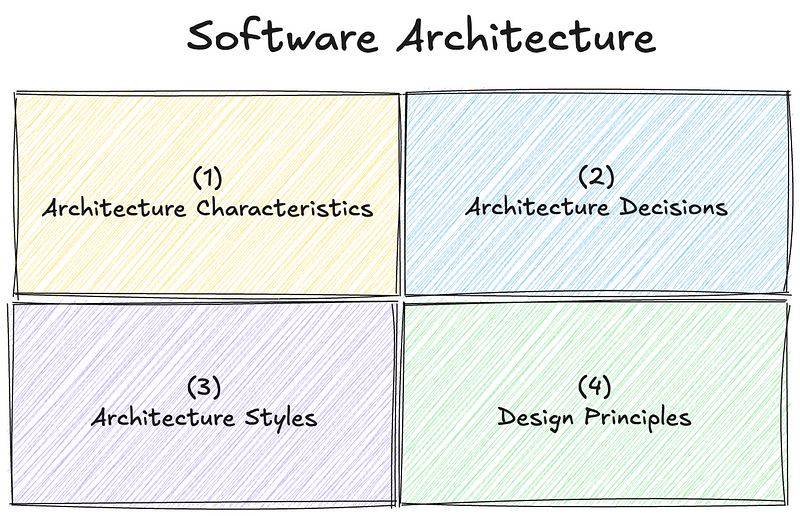 Software architecture pillars
Software architecture pillars
Let’s quickly unpack each one.
1. Architecture Characteristics
Architecture Characteristics are the qualities that define how a software architecture performs under various conditions. These include non-functional requirements such as scalability, security, and performance. It’s the architect’s responsibility to prioritize which characteristics matter most, ensuring the system meets both business goals and technical constraints while guiding trade-offs throughout the design and development process.
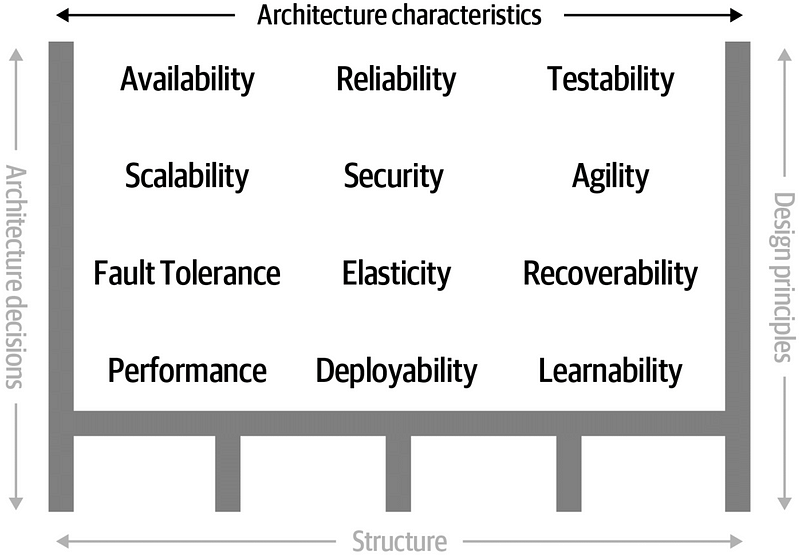 Fundamentals of software architecture - Characteristics
Fundamentals of software architecture - Characteristics
2. Architecture Decisions
Architecture Decisions are the rules and choices that define the system’s structure. They include selecting technologies, defining component boundaries, and enforcing security policies. Engineering teams rely heavily on these decisions for their development workflows, for example, how to access databases, deploy new versions of services, and view service logs. These critical rules set by the software architect guide how teams interact with and build on specific components.
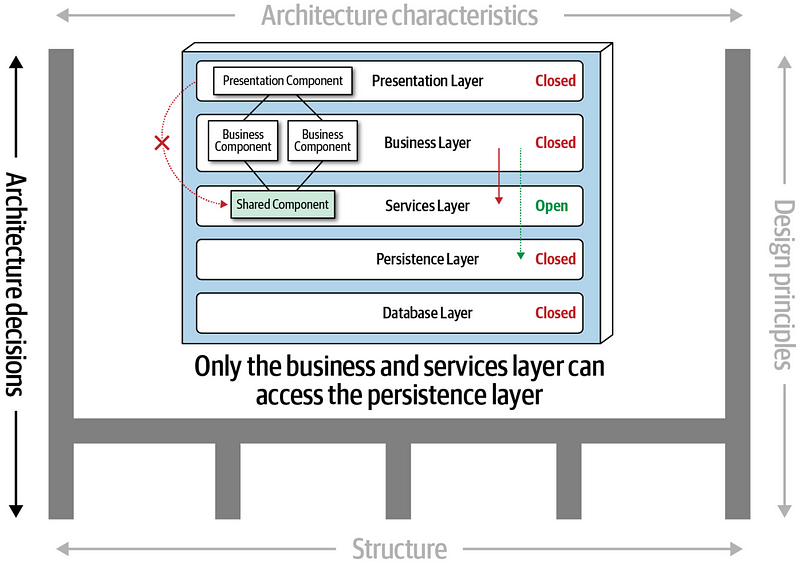 Fundamentals of software architecture - Decisions
Fundamentals of software architecture - Decisions
3. Architecture Styles
Architecture Styles describe the fundamental organization and structure of a software system. They provide common styles or templates that architects use to design systems in a way that meets specific requirements. Examples of architecture styles are:
- Monolithic Architectures: Layered, Pipeline, Microkernel
- Distributed Architectures: Event drive, Service-oriented, Microservices
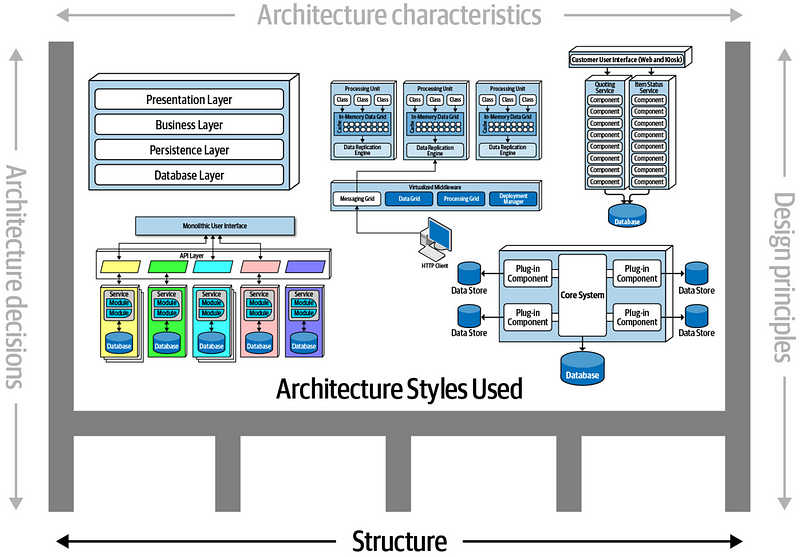 Fundamentals of software architecture - Styles
Fundamentals of software architecture - Styles
4. Design Principles
Design Principles are a set of guidelines on how to design solutions to be maintainable, scalable, and easy to develop. These principles emphasize aspects like modularity, separation of concerns, encapsulation, and simplicity. Using the right design principles empowers engineers to build systems that can evolve with changing requirements while reducing complexity and facilitating easier testing, debugging, and collaboration within development teams.
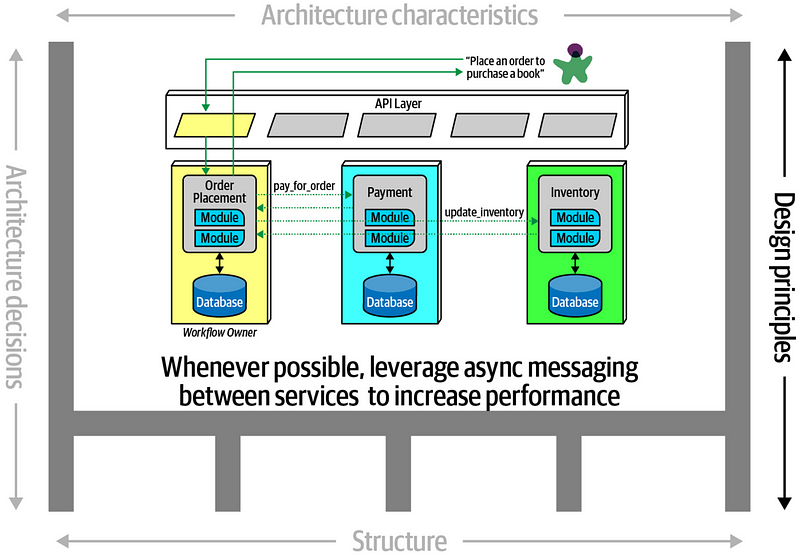 Fundamentals of software architecture - Principles
Fundamentals of software architecture - Principles
🧰 Software Architect’s Toolkit
Besides managing technology stacks and tools, software architects use key practices to guide their decisions.
- Architecture Decision Records (ADR): They document choices or architectural changes with ADRs, capturing key elements like status, context, decision, consequences, and compliance for transparency and future reference.
- Architecture Diagrams: They design architecture diagrams to get a topology of a system and visually map how components fit and interact together (using C4 Model).
- Risk Assessment: They use a risk assessment tool to evaluate the impact and likelihood of potential issues to proactively manage challenges and align architecture with business goals.
